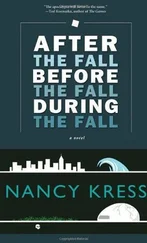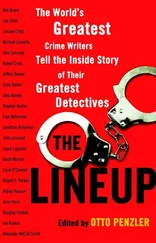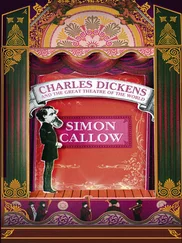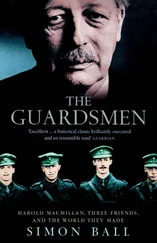In her dissertation work on rural asylums Jane had come across Bedford’s name a few times, twice in relation to the Whitmore Hospital for Convalescent Lunatics. A relatively minor figure in Victorian medical history, he was known mostly as an innovator of galvanizing, or “electrotherapy,” machines, though his practitioner’s licence was revoked after the deaths of two of his patients. His surgical implements and three of his electro-medical prototypes had been willed to the hospital nearest his estate after his death at the turn of the century. The collection, some twenty items all together, included three galvanizing machines, two trephines to bore into the skull, a hysterotome, various saws with tiny pointed teeth, a half-dozen mouth gags and two sets of restraining straps — one made of cloth and the other of leather. They’d arrived at the hospital in a large wooden crate and were promptly relegated to storage. In 2005, when a new administrator discovered them wedged behind an old X-ray machine in a corner of the basement, she’d contacted a handful of curators at some of the larger museums. No one was interested. Eventually a local archivist who’d done her MA degree with Jane directed the administrator to the Chester, and the Bedford collection became Jane’s first acquisition.
We know that Charles Leeson was introduced to the electric shock machine a week before his escape into the woods. He turned forty-three years old the day it happened. If the Whitmore staff had consulted his casebook they would have noted that the day’s date, the 26th of July, corresponded to the anniversary of his birth, which would have explained his boisterous behaviour in the day room and insistence at breakfast that he be given a collop of bacon off everyone’s plate.
A month after Leeson began his tenancy at the Whitmore, it had been reported that he was improving, and his brother had come up to see him, arriving in a hack and presenting Leeson with a paper bundle of cured meats and ripe cheeses. That appearance had not been repeated for a number of months, although Leeson had taken special care to strike off the days as late July approached in the hope that another such visit would occur on the occasion of his anniversary. He had spent the better part of a week imagining it in vivid detail: Richard appearing in the day room in his smart hat and gloves, carrying a parcel bound in twine and stepping aside gallantly to present Emily. But this was where the daydream fell apart, because try as Charles might to change it, Emily’s expression always crumbled when she caught sight of her husband: a gaunt-faced man folding and unfolding his hands, his eyes darting around the room even as he attempted to fix them. In this reverie, the gift Richard pressed into Charles’s arms was heavier than expected, as if it were a whole rump or shank of ham. When Leeson dropped his nose toward it, something inside it gave a kick and the parcel moved, causing him to search his brother’s needle-like face for an explanation. None was offered, so Charles turned back toward Emily, only to find her over by the games table stroking Wick’s cheek with a palm leaf and laughing at his pursed lips and upturned chin. Then the rain came, falling inside the day room, and Richard spoke between clenched teeth, glancing Charles with spittle, saying, “The dark forces are upon you—” saying, “The Lord giveth—” saying, “The country will rally against—” saying, “At a fixed rate of two percent interest—” saying, “You will never see her again.”
This was how the daydream always ended, although Leeson tried, day after day, from the windows that faced the front lawn, to imagine Richard arriving all over again: Richard in his smart hat and gloves carrying a parcel bound in twine, stepping aside to present Emily. The idea of Emily was the one surety he depended on, though it became looser around the edges as the weeks passed by. In truth, Leeson knew that he could do without his brother, could live complete even if he never set eyes on his sour face again. Richard’s arrival in the dream was a formality, a tic he needed to move past, some mental obstacle that blocked the real thing.
The dimmest of the hospital attendants during Leeson’s stay was a thicknecked man called Bream. His features were contradictory — eyes small but heavily lashed, nose pocked but noble, the lips under his patchy moustache plump. Because of this he appeared both dainty and brutish, the latter quality inevitably winning out when he opened his mouth to speak. Perhaps this was why it came as a surprise to Leeson that Bream, of all people, would have been aware of his anniversary, entering Leeson’s ward as he did, carrying a mahogany box on a silver tray. And perhaps it was because Bream was smiling that Leeson believed he was being brought tea — not tea slopped from a pot into a cup as usual, but tea displayed in a proper tea box, one that, when opened, would reveal rows of canisters containing a variety of imported leaves. Never mind that the gesture did not make sense after Bream’s behaviour following breakfast: the big man had chased Leeson around the day room for upending the card table, had crossed his arms over Leeson’s so that he couldn’t move, had walked Leeson back toward his bed step by step, as if they were a four-legged monster in a sensation play.
“I’d rather—” Leeson had entreated before sensing the futility of his overture. Still, a few scuffled steps later, Bream, sensing Leeson’s resignation, had relaxed his grip and the solicitor had wriggled free, marching quickly toward his ward unescorted.
A short time later, Dr. Thorpe strolled into the ward. He conferred with a tall, sallow-looking gentleman with reddish hair and a trimmed beard. Leeson grinned, delighted at the possibility of a party in his honour.
“Leeson,” Thorpe began, slowly and clearly, “this is Dr. Bedford. He is going to help ease your agitation.” Having announced this, Thorpe turned to Bedford and began to reiterate in low tones his patient’s predicament, listing off the symptoms he’d later record in his report: increased anxiety, troubled sleep, fleeting moments of clarity as to the exact nature of the harm he’d caused and demands at odd hours to see a commissioner who could release him to Emily so that he might plead forgiveness for his error.
After this, Bedford sat stiffly on the edge of the mattress and repositioned the box Bream had set on the side table. He made a few notes about his perception of the patient — an amiable-seeming man who smiled up at him with pleasure, an expression that was both unexpected and welcome. Bedford had thus far taken his galvanizing machine to three asylums and his patients had ranged from wary to hysterical. The last patient here at the Whitmore, Hopper, had gone so far as to wrap his hands around Bedford’s neck, reddening the medical electrician’s skin before the attendants managed to free him.
Now, with the air of a man about to conduct a chamber orchestra, Bedford extended his arms, lifted the lid on the box and pulled out the wires. The door on the far side of the ward creaked open and Herschel came in to sit on his own bed behind Leeson’s.
“What age is he?” Bedford asked Dr. Thorpe.
“Forty-three,” Leeson answered, tilting his head to get a better look at the selection of tea. Bedford pulled the electrodes from their case just then and drew the wire transmitters toward Leeson’s hands, nodding for Bream to fasten his wrists so that the transmitters could be applied to the base of each palm. The attendant’s hand descended just as Leeson jerked his own away.
“Easy now,” Bedford said, smiling reassuringly.
Suddenly aware of what was coming, and unsure how to stop it, Leeson opened and closed his mouth, trying to find the words that would rectify the misunderstanding. Bedford leaned close, whispered, Shhh as one might to a child. Bream, taking two strips of cotton from the doctor’s black bag, bound Leeson’s wrists to the bed frame and then stood back while Bedford made a few more adjustments to the dials on the front of the machine. Herschel, in the whitewash of the room, began to hiccup.
Читать дальше












